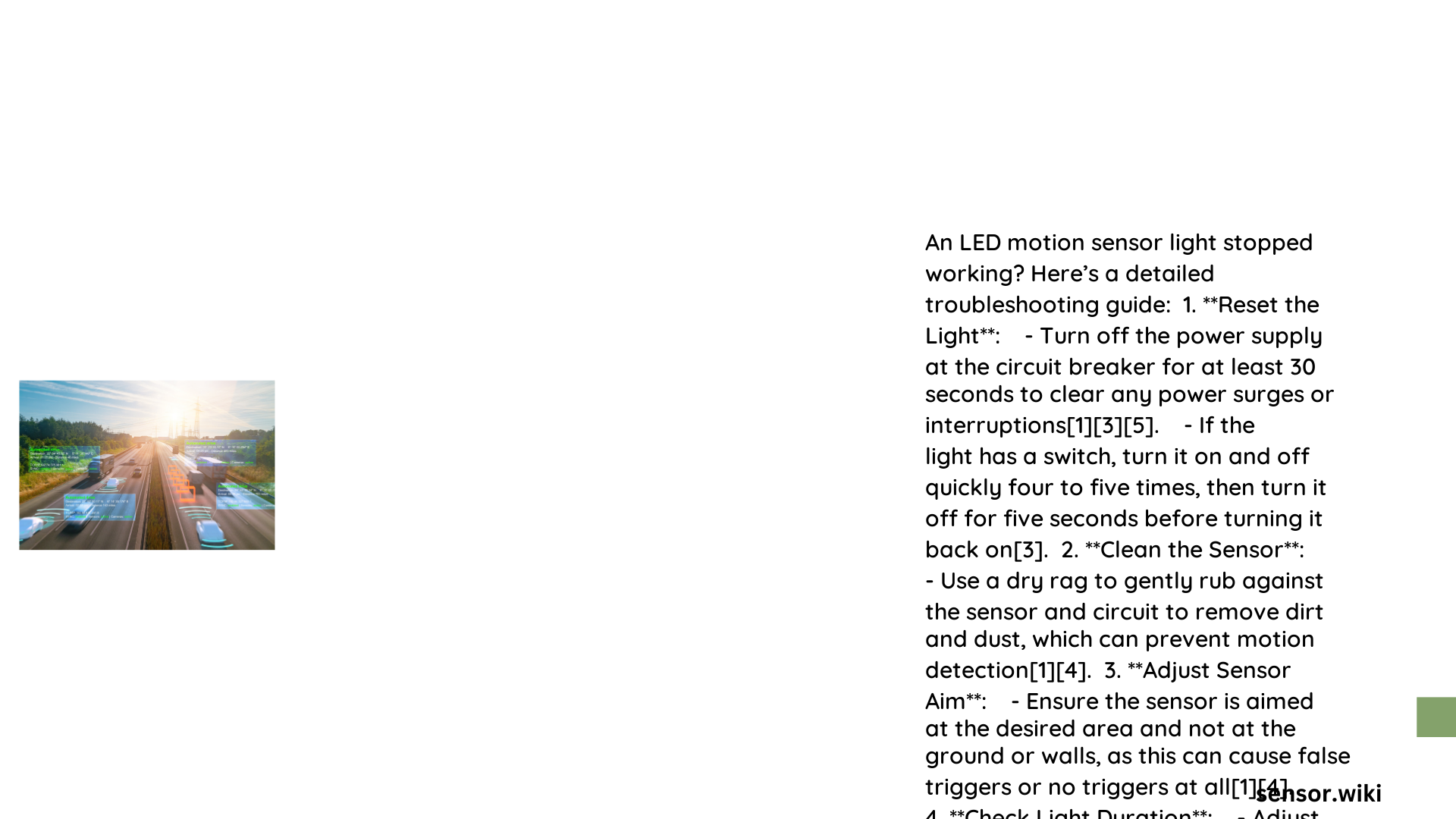LED motion sensor lights can unexpectedly malfunction due to various technical and environmental factors. When your outdoor or indoor motion sensor light stops working, it can compromise security, convenience, and energy efficiency. Understanding the root causes and implementing systematic diagnostic approaches can help you quickly resolve these issues without expensive professional intervention.
What Causes LED Motion Sensor Lights to Stop Working?
Power Supply and Electrical Problems
| Problem Type | Potential Causes | Diagnostic Steps |
|---|---|---|
| Voltage Issues | Low battery, faulty wiring | Check voltage with multimeter |
| Circuit Disruption | Loose connections, corrosion | Inspect wiring thoroughly |
| Power Surge Damage | Electrical fluctuations | Reset circuit breaker |
How to Diagnose Motion Sensor Light Failure?
Step 1: Initial Power Verification
- Confirm power source functionality
- Check circuit breaker status
- Verify voltage requirements
Step 2: Physical Sensor Inspection
- Clean sensor surface
- Remove potential obstructions
- Check for visible damage
Detailed Troubleshooting Techniques
Battery-Related Diagnostics
- Identify correct battery type
- Test battery voltage
- Replace batteries if voltage is low
- Ensure proper battery installation
Sensitivity and Range Adjustment
- Locate sensitivity adjustment controls
- Test different sensitivity levels
- Verify detection range
- Eliminate false trigger sources
Common Sensor Malfunction Scenarios
Scenario 1: No Light Activation
– Potential causes:
– Sensor misalignment
– Blocked detection zone
– Incorrect sensitivity settings
Scenario 2: Constant Light Operation
– Potential causes:
– Persistent motion detection
– Environmental interference
– Sensor calibration issues
Advanced Troubleshooting Methods
Electrical Component Testing
- Use multimeter for continuity checks
- Inspect wire connections
- Verify ground connections
- Test sensor circuitry
Environmental Factor Evaluation
- Assess surrounding temperature
- Check for electromagnetic interference
- Evaluate light positioning
- Consider weather exposure impact
When to Seek Professional Help
| Complexity Level | Recommended Action |
|---|---|
| Basic Issues | DIY troubleshooting |
| Complex Electrical Problems | Professional electrician |
| Persistent Failures | Manufacturer warranty claim |
Preventive Maintenance Tips
- Regular sensor cleaning
- Annual electrical connection inspection
- Protect from extreme weather conditions
- Use surge protectors
Technical Specifications to Consider
- Voltage requirements
- Detection range
- Sensor type (PIR, microwave)
- IP rating for outdoor use
Replacement Considerations
- Compare repair vs. replacement costs
- Check manufacturer warranty
- Evaluate technological upgrades
- Consider energy efficiency ratings
Key Takeaways
- Systematic diagnosis is crucial
- Most issues are resolvable with basic troubleshooting
- Regular maintenance prevents unexpected failures
- Understanding sensor technology helps effective repair

